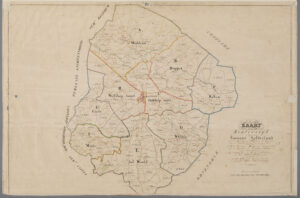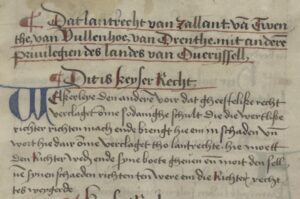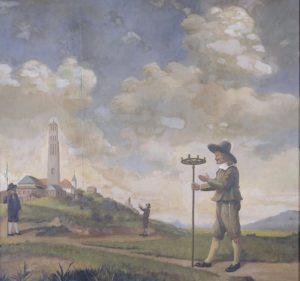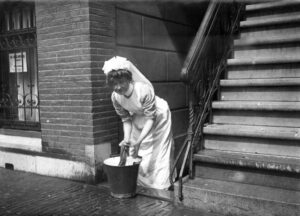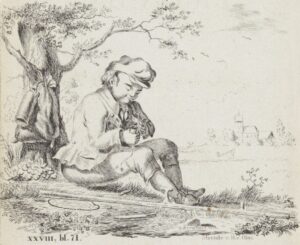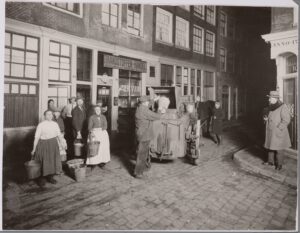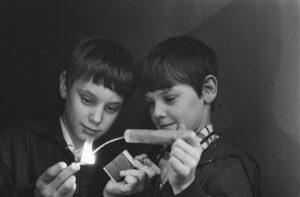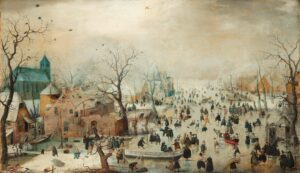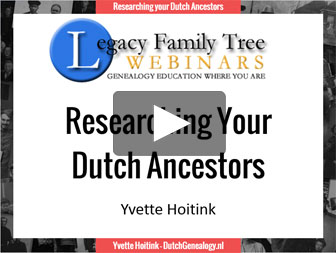A verzamelplan is a type of cadastral map created in 1832 to show the different sections within a cadastral municipality, and the maps/sheets within each section. See the article about Overview maps and minute maps for more information. … [Read more...]
Dutch term – Landrecht
Landrecht is the law of the land. Before the introduction of the civil code in the Netherlands in 1809, each province, region, or domain had their own laws. Understanding the local laws and customs can help you interpret records and understand your family history. … [Read more...]
Dutch term – Eenheidsworst
Eenheidsworst (standardized sausage) has become a proverbial way to say something is run-of-the-mill, not terribly exciting. The original eenheidsworst was introduced during World War I. Even though the Netherlands remained neutral, there were food shortages because overseas supply lines had been cut and much of the food produced in the Netherlands was sold or smuggled to Germany at inflated prices. The government introduced the eenheidsworst, consisting of 90% beef and 10% pork. Because … [Read more...]
Dutch terms – Bunder, Roede, El
Bunder, roede, and el were measures of land. You can find them in cadastral records and other land records. These terms have been used for centuries, and reflected different sizes in different areas. A bunder was typically 400 or 450 roede. An el was around 68-70 cm (distance from elbow to end of finger) and an el used for a surface area was a square with the sides of an el. In 1816, the metric system was introduced and these terms were given metric measures: Bunder: 10,000 m2 (100 x 100 … [Read more...]
Dutch term – Dienstmeid
A dienstmeid is a maid servant. The tasks of a dienstmeid depended on the wealth of the family, the presence of other servants or a housekeeper, and whether she worked on a farm or in the city. Tasks typically included cleaning, laundry, setting the fireplaces, etc. Richer households might hire a separate washing woman or cleaning lady, but in many households, this was all the task of one servant. On a farm, a dienstmeid would also be expected to milk the cows, take care of the other animals, … [Read more...]
Dutch term – Vreemdeling
A vreemdeling is a stranger or an alien. The word is used in genealogical records to indicate someone who was not Dutch, an immigrant. Vreemdelingen typically had to register with the municipality. The specific regulations and resulting records depend on the time and place. … [Read more...]
Dutch term – Onbewoonbaar Verklaard
In the early 1900s, a new residence law came in effect to improve the living conditions of poor people. Under this law, houses could be onbewoonbaar verklaard [declared unlivable] and the residents had to move out. … [Read more...]
Dutch term – Beerwagen
A beerwagen was a cess car, a car used to collect faeces in larger cities. In Amsterdam, this was also known as a boldootwagen, which jokingly referred to Boldoot, an Amsterdam factory making perfume. Before indoor plumbing, people would use buckets instead of toilets. A beerwagen would come by to collect the waste. It did not need to ring a bell, since its smell would announce its arrival. … [Read more...]
Dutch term – Vuurwerk
Vuurwerk is the Dutch term for fireworks. Traditionally, fireworks are lit at midnight on New Year's Eve. This year, fireworks are not allowed because hospitals are already overwhelmed. Fireworks is a modern version of the old tradition to make noise to scare the spirits of the old year away. Before fireworks were available, people would shoot their guns at midnight. You can sometimes find court records if people were firing their guns against local regulations, or if somebody got hurt. … [Read more...]
Dutch term – Winter
The Dutch word winter means the same in English: winter. Wintertime was traditionally the time to do indoor activities, such as finishing wooden shoes, weaving, making mats, etc. In many parts of the Netherlands, it was hard to get around in the winter since the roads were too boggy. As soon as it was cold enough for the ice to become reliable, many people used frozen creeks to get around, either on skates or on sleds. … [Read more...]
